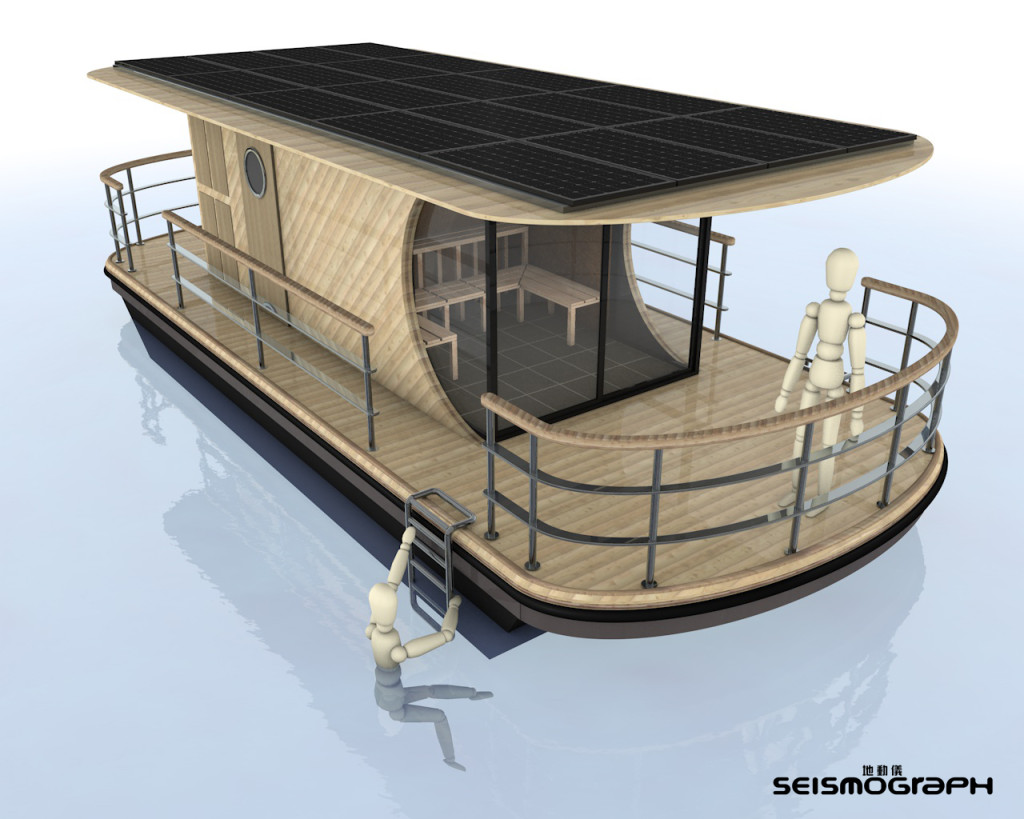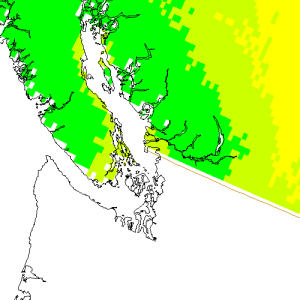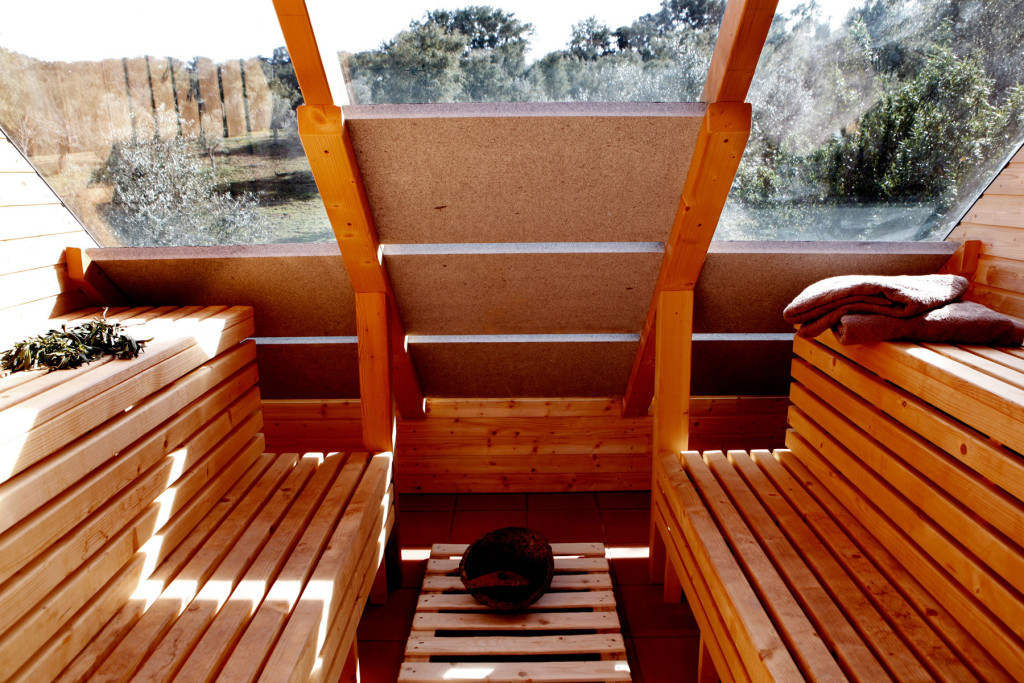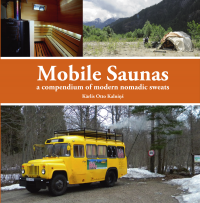I recently had a conversation about using photovoltaic solar arrays to power an electric sauna heater. Our sauna enthusiast friend had an old electric sauna heater they picked up for free, and was thinking about building a solar array to power it in a sauna they planned to build in a small trailer. We did some quick calculations to see how feasible it would be, and I thought I would share them here if anyone else was thinking about the idea.
The trailer is about 6’x10′, 6′ high. If you make the whole thing a sauna that’s a pretty respectable size for a small group of people, say 4-12 people. Your sauna volume will be about 360 cubic feet, or about 10 cubic meters. A general rule for small electric saunas is 1kW per cubic meter, but you can use a range from .6kW-1.2kW per cubic meter. If we went on the low end of that range (longer heat-up times) we could get by with a 6kW heater, but we’ll want about a 10kW heater for this project.
We like to use our sauna once a week for about a 3-hour session, and we invite our friends over and have a nice social sweat. You might use yours differently, like having more sessions per week that are shorter. Powering a 10kW heater for 3 hours a week is 30kWh per week, which is how much solar power we’ll have to collect and store to power this sauna. Since we have 7 days to collect our power, so we’ll have to get on-average 4.3kWh per day.
We live in Vancouver BC, 49′ North latitude. It’s quite cloudy and rainy in the winter and our days are quite short, and that’s when I want to sauna the most. Unfortunately, it’s not the best place for solar power during the cold season. If we want to sauna in December, our darkest month, the system will be overpowered the rest of the year, but we can use that extra power to sauna more often than once per week. The monthly kWh/kW potential in Vancouver ranges from 30 in December to 110 in summer, according to this photovoltaic mapper from Resources Canada, or from about 1kWh (December) to 4kWh per day. So to get our 4.3kWh/day, we’ll need solar panels rated at 4300W, which will cover about 270 square feet or 25 square meters. If we’re paying about $1/watt for the panels, the cost will be about $4300 for the panels.
We’ll also need to store that power until we use it for our sauna session, so a battery bank that can store 30kWh is required. This works out to around 6000 amp-hours (at 12volts) when providing for a 50% battery discharge so we don’t shorten the battery life too much. A quick check with my battery distributor tells me for deep cycle batteries I should be prepared to pay at least $3.80 per amp-hour, so I think that’s more than $23,000 in batteries. That battery bank also weighs over 1600kg (3500 lbs).
In addition to the panels and batteries, we’ll need to get a power inverter to convert the 12volt power the battery bank provides to the 220volt AC power the sauna heater requires. You will also need a charge controller for your solar panels, and cables to hook up the batteries. If you want this system to be mobile, you will probably want another trailer for the panels and batteries, because it won’t fit on or in your sauna trailer.
Let’s suppose that your cables and power equipment costs around 10% of the rest of the system (just a guess here), then you should be able to take advantage of that free electric sauna heater and build a solar power system like this for your weekly saunas for around $30,000.
I’m not an expert at solar power generation. Have you worked out your own numbers? We’d love to see what you came up with! There’s more than one way to do it.
If you only use your sauna in the sunnier months, you could cut the size of the solar array, battery bank and cost by 50% or more. This might work for a summer cottage.
If you are happy with “infrared sauna” heaters, the infrared heat lamps only heat the room to a low temperature (around 50C/120F) and thus require less power. For this project, one company recommends 6.6kW of heater elements compared to our 10kW system, so you could cut your power use and thus cost by about 33%.
Recently the electric car company Tesla announced a battery module (probably lithium-ion) for home use that can store 10kWh for $3500, although the devices have not yet been produced or evaluated. If the price is correct, for our system described here, we would need 3 of these units, for a cost of $10,500 for our 30kWh system (vs $23,000 for our lead-acid batteries). Lithium-ion batteries have a much shorter life, and need replacement more frequently, about every 5 years.
Instead of storing the solar power in batteries, it could be possible to use the heat of the sun directly. I’m not sure if this could work in our region, but it might be possible somewhere. You could use a greenhouse effect, storing the solar energy in a glass-faced sauna. You could also use reflectors, thermal mass and other techniques to concentrate the solar heat for storage and release. There’s a few photos and stories available if you search for solar saunas, for example Solar Exergy, and Munda Ecoturismo. Some of these resemble a half-cedar, half-glass gazebo. I’m not sure how well these worked, or how hot they get. They probably can’t be used in the winter or maintain heat after sunset, but they would be excellent for enjoying the warmth of the sun in regions where there’s cold air but lots of sunlight. They might be useful as a hybrid system, with solar energy to warm up the sauna during the day, and a traditional heater to keep it hot in the evening. I’d love to hear more about them.
Another way of storing solar energy is in biomass, like wood, or vegetable oil, to release it through combustion. We’ve looked at the numbers for vegetable-oil sauna stoves before. If I recall correctly, we needed to harvest at least an acre of an oil crop (like soybeans) to provide for one weekly sauna session per week for a year.
We’re quite happy at the moment with our propane sauna heaters. The stoves cost from $500-$2000, depending on how fancy the controls are, and we use about $10 in propane per session. The propane is widely available where we are and is easy to use. Of course, we need the propane delivery infrastructure, which might not be ideal if you are trying to live “off-grid”. For “off-grid” sauna heat, it’s hard to beat a good old wood stove.
I’m not an expert at solar power generation. Have you worked out your own numbers? We’d love to see what you came up with! There’s more than one way to do it.





